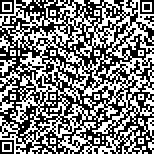| 摘要: |
| 养殖过程的循环水交换量能够显著影响皱纹盘鲍(Haliotis discus hannai)的生理状态, 进而影响其养殖存活率和生长率, 然而不同循环水量对于皱纹盘鲍的生理状态影响的分子机制尚不明确。本实验以皱纹盘鲍(Haliotis discus hannai)为研究对象, 将鲍分别置于循环水交换频率为1次/d、2次/d、4次/d的条件下(编号为C0、T2和T4组)暂养3 d, 然后利用Illumina Hiseq 2500技术测定不同处理组鲍鱼的肌肉组织中转录组表达情况。结果表明, 单次换水组(C0)和多次换水组(T2和T4)间差异表达的基因个数较多, 分别为4 095和3 617个, 而T2与T4组之间的差异表达基因个数则较少, 仅为232个。对差异表达基因进行GO和KEGG功能分析显示, 单次换水组(C0)和多次换水组(T2和T4)间差异表达的基因主要集中在能量代谢和免疫反应相关通路或基因, 随机选取10个差异基因进行荧光定量PCR验证, 定量PCR结果与转录谱结果一致, 证实了转录组测序结果的可靠性。本研究说明了更高的水交换量下, 鲍的代谢和免疫相关通路被激活, 可能有助于鲍鱼维持较好的生理和免疫状态, 从而表现出更好的生长、存活等表型。 |
| 关键词: 皱纹盘鲍 水交换量 转录组 能量代谢 免疫 |
| DOI:10.11759/hykx20201003001 |
| 分类号:S966.9 |
| 基金项目:天津市种业科技重大专项(19ZXZYSN00080); 天津市自然科学基金(18JCQNJC84500); 广东省水产健康安全养殖重点实验室开放基金(GDKLHSA0806); 2020年天津市大学生创新创业项目(202010061010); 2020年现代农业产业技术体系建设专项资金(CARS49) |
|
| Sequencing and analysis of the Haliotis discus hannai transcriptome under different water exchange rates |
|
ZHOU Jia-zheng1, GUO Yong-jun1, QUAN Feng1, LIANG Jian1, LI Yong-ren1, HUANG Ya-dong2, LIANG Shuang1
|
|
1.Fisheries College, Tianjin University of Agriculture, Tianjin 300380, China;2.Tianjin Haisheng Aqua-cu-l-ture Limited Company, Tianjin 300270, China
|
| Abstract: |
| The rate of circulating water exchange can remarkably affect the physiology of abalone, including survival and growth. However, the molecular mechanism of this effect is unclear. In this study, abalones were placed under a circulating water exchange frequency of 1, 2, or 4 times/day (called C0, T2, and T4, respectively) for 3 days. Illumina Hiseq 2500 technology was used to investigate the transcriptome expression in the muscle tissues of abalone from the different water exchange groups. The results showed that many differentially expressed genes were detected between the single water exchange group (C0) and the multiple water exchange groups (T2 and T4), such as 4, 095 and 3, 617, respectively, while the number of differentially expressed genes between the T2 and T4 groups was relatively small at 232. The GO and KEGG functional analyses showed that the differentially expressed genes between the single water exchange group (C0) and the multiple water exchange group (T2 and T4) were mainly classified into energy metabolism and immune response-related pathways or genes. Ten differentially expressed genes were selected for verification by fluorescence quantitative polymerase chain reaction, and the results were consistent with the transcription profile results, confirming the reliability of the transcriptome sequencing results. This study shows that metabolism and the immune-related pathways of abalone were activated under the higher water exchange rate, which may help abalone maintain better physiological and immune status, thus leading to better growth, survival, and other phenotypes. |
| Key words: Haliotis discus hannai water exchange rate transcriptome energy metabolism immunity |
